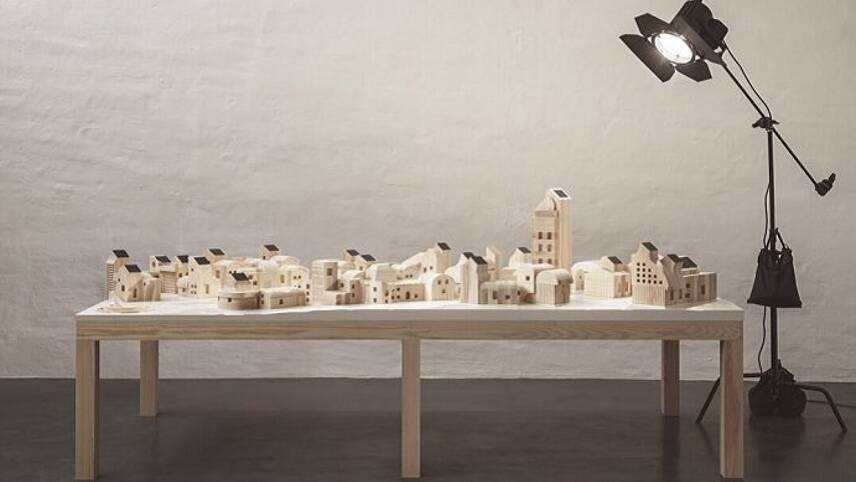Register for free and continue reading
Join our growing army of changemakers and get unlimited access to our premium content

SolarVille aims to showcase how neighbourhood energy solutions could be created using blockchain
The concept, dubbed SolarVille, is currently at the modelling stage, with a wooden village prototype highlighting how a microgrid would enable people to sell excess energy to others on a blockchain-powered system. All of the buildings within the village are hardwired together to create the microgrid for energy sharing in what the lab claims is a fully scalable model.
The design enables people to generate excess energy by either consuming less or by installing more solar panels, with the blockchain platform then allowing them to sell it to their neighbourhood – without any third party involvement. Energy transactions between neighbours would be logged on a secure and transparent ledger.
SolarVille is an interactive model in which viewers can see the whole flow of energy through small LED lights embedded in the model that showcases electricity traded within the community in real-time. A hatch on the side of the table displays the underlying blockchain technology at work. As a result, the model enables observation of a functioning network of blockchain-traded energy and interacts with an artificial sun to see its effect on the system.
Alongside the concept, Space10 also released a report into the application of solar photovoltaics as a primary method to decarbonise energy. It highlighted how 90,000 terawatts of solar energy compared to 900 terawatts of wind energy can be captured globally – and biomass or water power were “further orders of magnitude less significant even than wind”.
It also highlighted the problems of nuclear energy which it claimed “both fission and fusion have serious problems” with the next generation of nuclear power stations proving costly to build and running into delays and budgetary issues. Additionally, storing waste was still a concern with a cheap and safe method not yet being found.
People and Planet Positive
The concept follows Ikea’s ambitious overall business goals on sustainability. It has a target for reducing greenhouse gas (GHG) emissions from its stores and operations by 80% by 2030, a move which has been approved by the Science-Based Targets Initiative (SBTi).
Ikea’s People and Planet Positive strategy outlines how the global retailer aims to champion the circular economy alongside headline goals of becoming “climate positive” and sourcing 100% renewable energy as well as a single-use plastic ban by 2020. It will also strive to design all products using only renewable and recycled materials by 2030.
Among its other pledges is a policy to use electric vehicles (EVs) for all its last-mile home deliveries in Amsterdam, Los Angeles, New York, Paris and Shanghai by 2020, after announcing a 2025 target of using zero-emission vehicles to make all of its last-mile deliveries worldwide last year.
Blockchain solutions
The news also follows a number of initiatives to incorporate blockchain into sustainability objectives by other global firms. In February, international food and drink firm Princes unveiled measures to make its supply chain practices more sustainable, including a pledge to use blockchain to ensure workers’ rights are protected.
Acting as a digital ledger, blockchain creates a verifiable audit trail that can be used for any transaction, and can be implemented – and in some cases, is already used – across numerous environmental projects, from forestry and fisheries to carbon accounting and energy.
PwC has highlighted blockchain as one of the ‘essential eight’ technologies that will play a crucial role in tackling climate issues. And the technology as has also been heralded as a transformative way to digitally track supply chain activity by techUK.
While a blockchain boon could be on the horizon, the technology is still in the early stages, with edie’s own research finding that only one of 200 sustainability and energy professionals had already applied blockchain applications within their business just over a year ago.
James Evison


The disposal of high level nuclear waste was resoled well over 40 years ago at AERE Harwell. It involves vitrification and containment in stainless steel vessels which are stored in underground facilities. It all decays in 700 years.
The problems lie with public and political perception, not with the job itself.
Richard Phillips